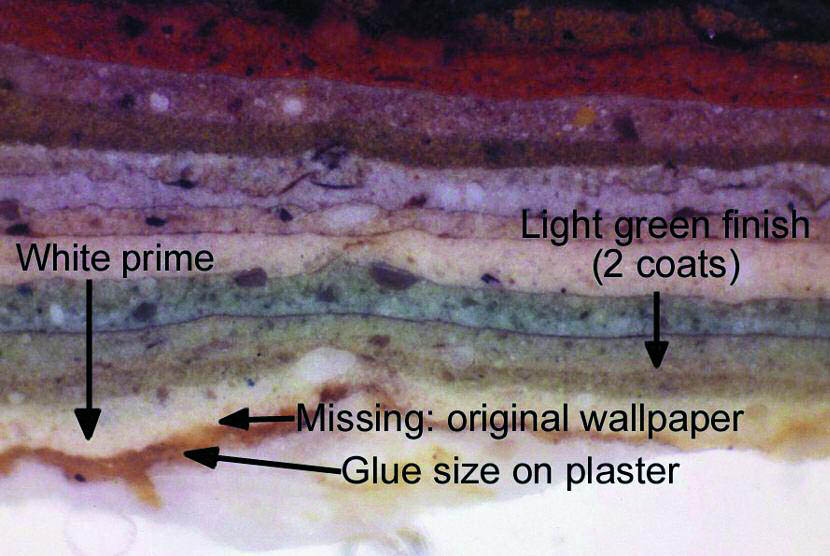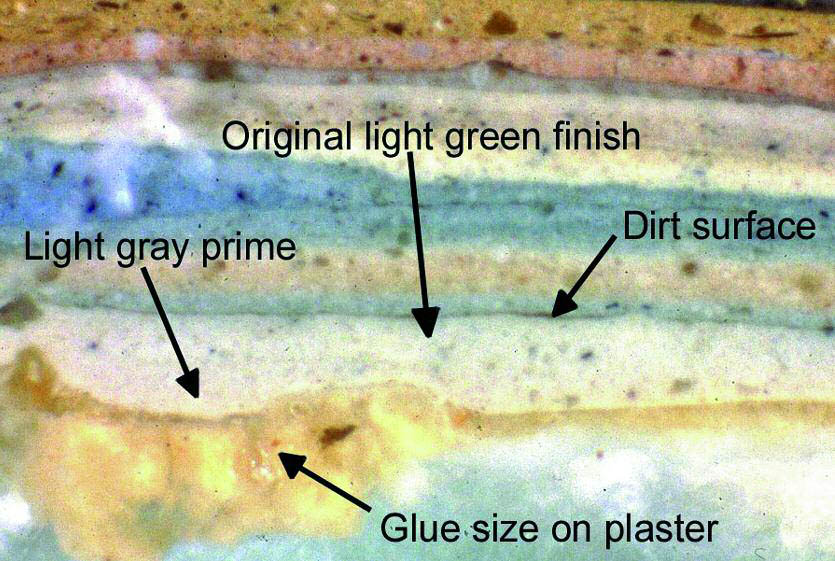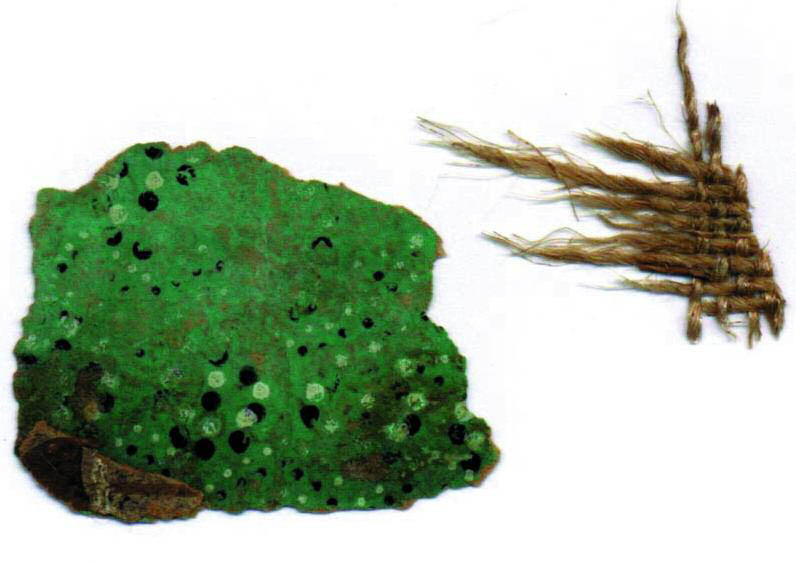INVESTIGATION, ANALYSIS, AND AUTHENTICATION OF HISTORIC WALLPAPER FRAGMENTSFRANK S. WELSH
3 EVALUATING THE CONTEXT OF THE PHYSICAL EVIDENCEThe second principal point to consider is an examination and evaluation of the context in which the evidence is found. For a project where the use of wallpaper is unknown, studying the layer structure of the associated coatings and their substrates is essential. If the investigation yields neither paper fragments nor fiber evidence, then the nature of the plaster, size, or even composition of the first and/or second paint layers on the plaster may provide convincing evidence for the use of wallpapers. In 18th-century buildings, the particular paint color used on the wood trim might also suggest the use of wallpaper but is not in itself conclusive evidence of paper use. Conversely, any of these factors could also indicate that the walls were never papered but always painted. One site where paint usage was a determining factor was the Isaiah Davenport House (ca. 1820) in Savannah, Georgia. There the microscopical analysis of paint layer sequence provided substantial evidence of wallpaper use at time of construction. A multi-layered paint cross section from the plaster walls in the first-floor Stair Hall (fig. 8) shows the original glue size on white plaster. The presence of a glue size does not necessarily confirm the use of wallpaper but can suggest its use. In this case, comparative analysis of paint layers on the first-and second-floor Hall walls, combined with analysis of a light green finish, presented convincing evidence that wallpapers were used originally and that the walls were not painted until ca. 1840.2 At Kenmore (1775), in Fredericksburg, Virginia, the paint layer structure contraindicated wallpaper
Another example demonstrating the importance of evaluating the physical context is found at Adena, the Latrobe-designed mansion in Ohio. All paint and wallpaper were removed during a 1953 restoration; nevertheless, as thorough as the scraping was at that time, thick areas of accumulated paint remained in the corners and crevices of the moldings around doors and windows. The samples revealed a remarkably extensive decorative palette consisting of 17 different paint colors and evidence of graining and marbling as well as wallpapering. The plaster walls in the six rooms showing evidence of paper were never finished with a white or skim coat of plaster, as were the walls in all other rooms. The rough or brown coat of plaster served as the finished surface, suggesting that the walls were intended to be covered with paper and, consequently, did not require the additional expenditure for a finish coat of white plaster. This interpretation is corroborated by substantial documentary evidence, including an 1821 insurance survey of the house indicating the use of wallpapers and a bill to Thomas Worthington from Thomas & Caldcleugh of Baltimore for the sale of a drapery-patterned paper and border. At the Woodlands (1780s), the Philadelphia country seat of William Hamilton, the first-floor southeast Parlor walls were originally sheathed with large wooden boards much like those at Gunston Hall (1755) in Virginia and Verdmont (early 1700s) in Bermuda. The unpainted board walls in the Parlor at the Woodlands retained many layers of wallpaper. The earliest one had a delicate design on a bright bluish green background.3 It was adhered to a thick linen canvas backing—almost like burlap—that had been nailed, rather than glued, to the board walls (fig. 10). Hanging the paper in this way disguised the imperfections and joints of the sheathed wall and is consistent with the best techniques of wall-paper installation in the period. The context of this paper, on canvas nailed onto unpainted board walls, contributed to the evaluation process and to its authentication as the original finish on the walls.
|


